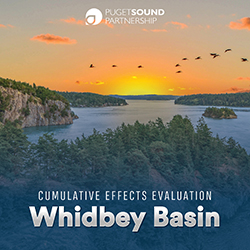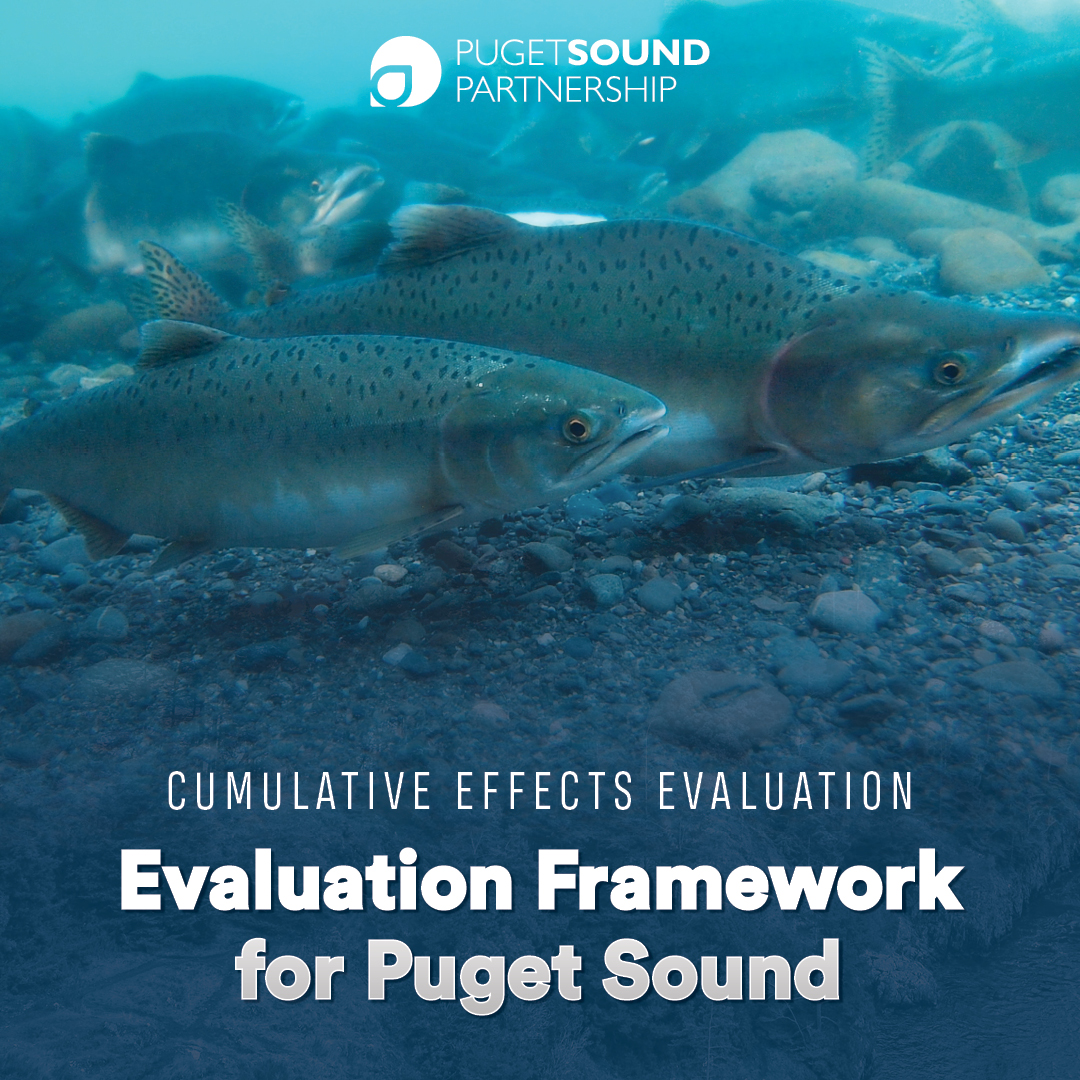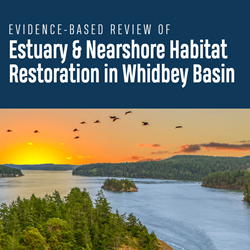Assessing cumulative effects of restoration and protection actions in Puget Sound
At the Puget Sound Partnership, our mission is to accelerate and advance the collective effort to recover the Puget Sound. Effectiveness means achieving the desired outcomes of a healthy, resilient ecosystem and thriving communities. Our effectiveness work focuses on evaluating how well recovery actions are achieving those intended results.
Thousands of restoration and conservation projects have been implemented throughout Puget Sound, many with involvement from the Partnership. While these efforts contribute to recovery, it is challenging to directly attribute ecosystem improvements to individual projects—let alone to assess the cumulative effects of multiple projects and recovery actions on the ecosystem and its species.
To address this knowledge gap, the Puget Sound Partnership is supporting a multiyear, science-based evaluation of how nearshore habitat recovery actions impact juvenile salmonids in the Whidbey Basin. By collaborating with a team of leading researchers from multiple institutions, this project seeks to understand the cumulative impacts of habitat restoration efforts implemented over the past two decades—particularly those aimed at improving critical habitat for juvenile Chinook salmon.
Launched in 2021, this ongoing study is helping to identify which interventions are most effective in achieving our collective recovery goals. The findings will deepen our understanding of key ecosystem processes and inform more strategic, effective recovery actions moving forward.
Learn more:
We recommend starting with our webinar,‘Cumulative Effects Evaluation for Salmon Restoration’, presented at the Salish Sea Ecosystem Roundtable on December 3, 2024.
peer reviewed publications
Assessing the cumulative effects of nearshore habitat restoration actions for multiple populations of juvenile salmon in Whidbey Basin, Washington: Foundation and approach for synthesis and evaluation - Kathryn Sobocinski, Michael LeMoine, Joshua Chamberlin, Letitia Conway-Cranos, Annelise Del Rio, Heida Diefenderfer, Correigh Greene, Jason Hall, Gary Johnson, Ronald Thom, Elene Trujillo, and Todd Zackey. Published in Frontiers in Marine Science on June 16, 2025.
Fact sheets
Status reports
2023 – 2025 Biennium Report: This report highlights progress made on the Whidbey Basin cumulative effects study during the 2023–2025 biennium. Early in the project, the team defined key research questions, mapped out the study’s scope, built conceptual models, and developed a framework of hypotheses to guide the work. We also identified key indicators and lines of evidence to help evaluate the effects of restoration. Later in the biennium, we conducted a pilot study to test our methods. This focused on two mid-level hypotheses related to habitat structure and salmon movement and included 12 more specific, detailed hypotheses within those areas. The pilot study produced preliminary findings that begin to show how salmon habitat restoration projects are influencing conditions across the Whidbey Basin. It also helped refine the tools and methods we’ll use in future phases of the research.
2022 – 2023 Report: This report documents recent progress on the Whidbey basin cumulative effects study for 2022-2023. The report details the development of analytical aspects of the study, including methodology for the systematic literature review, synthesis approach, and the evaluation of causal criteria.
January - June 2022 Status Report: This report details an evidence-based approach to evaluate cumulative effects produced from salmon habitat restoration at a greater basin scale for application to salmon recovery efforts in Puget Sound.
Past Presentations in chronological order
Presentation to the Puget Sound Science Panel - December 2021: This presentation was used to introduce cumulative effects concepts and provides an overview of a Puget Sound case study.
Public webinar focused on updates from the project as of August 5th, 2022: This webinar presents progress on the development of this cumulative effects evaluation in Whidbey basin and provides an overview of study implementation looking to occur between 2022-2025.
Planning documents and additional resources
The following documents showcase the road maps and building blocks used to create this ongoing cumulative effects research project.
Methodology and Design for a Case Study of Juvenile Salmonids and Nearshore Habitats in Whidbey Basin: Preliminary design proposal for a case study applying cumulative effects evaluation to restoration of nearshore habitats in the Whidbey basin.
Guidance for Evaluation of Cumulative Effects of Puget Sound Recovery Actions: General guidance document for practical application of a cumulative effects evaluation methodology in Puget Sound.
Communications plan for the cumulative effects evaluation work in Puget Sound: The plan outlines specific audiences, strategies, products, actions, and known barriers. Included in the plan is a table of anticipated engagement and outreach opportunities for 2023-2025.
Stay connected
Subscribe here for news and announcements on the Whidbey basin cumulative effects study.
Last updated: 08/22/25


